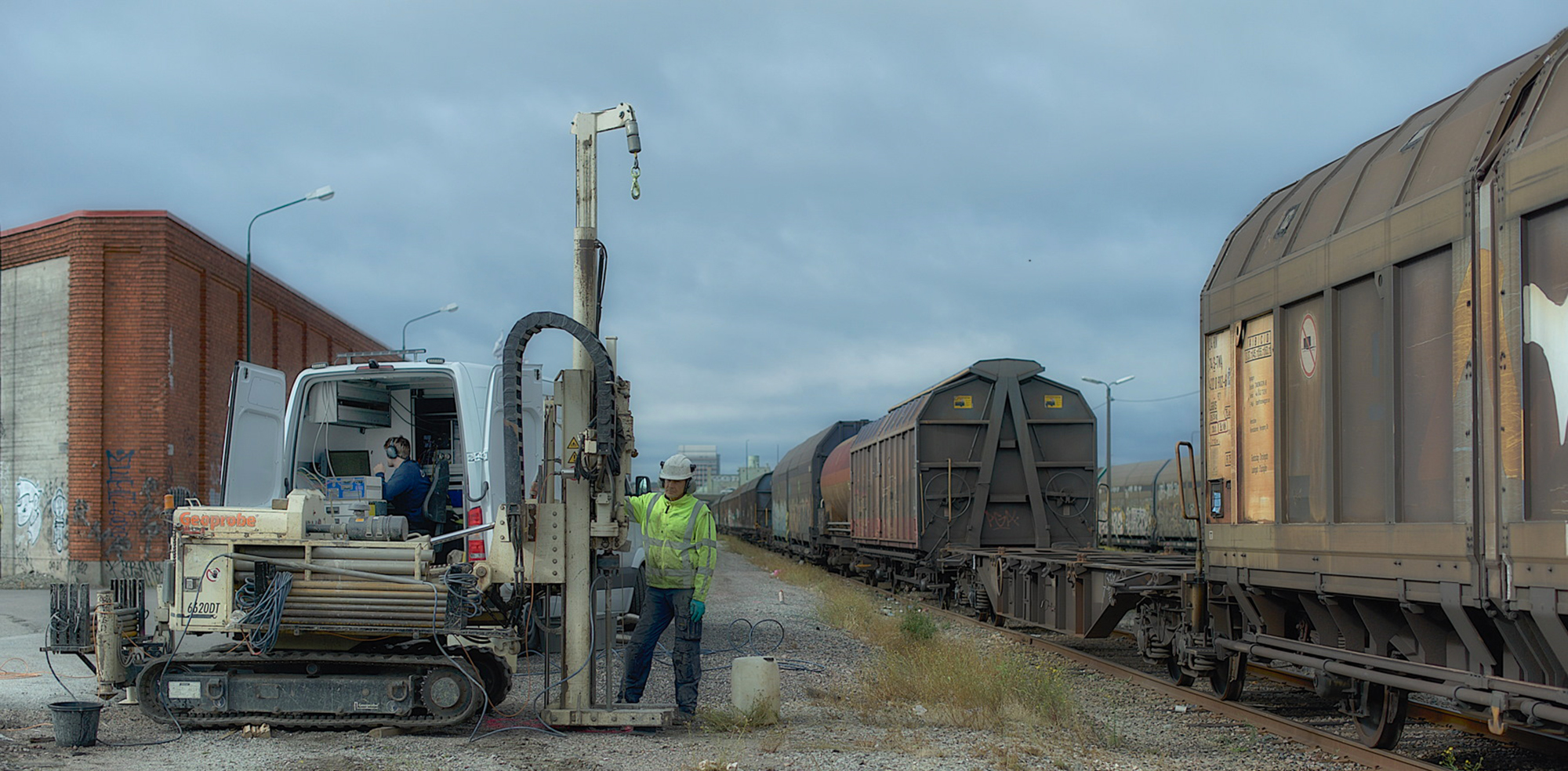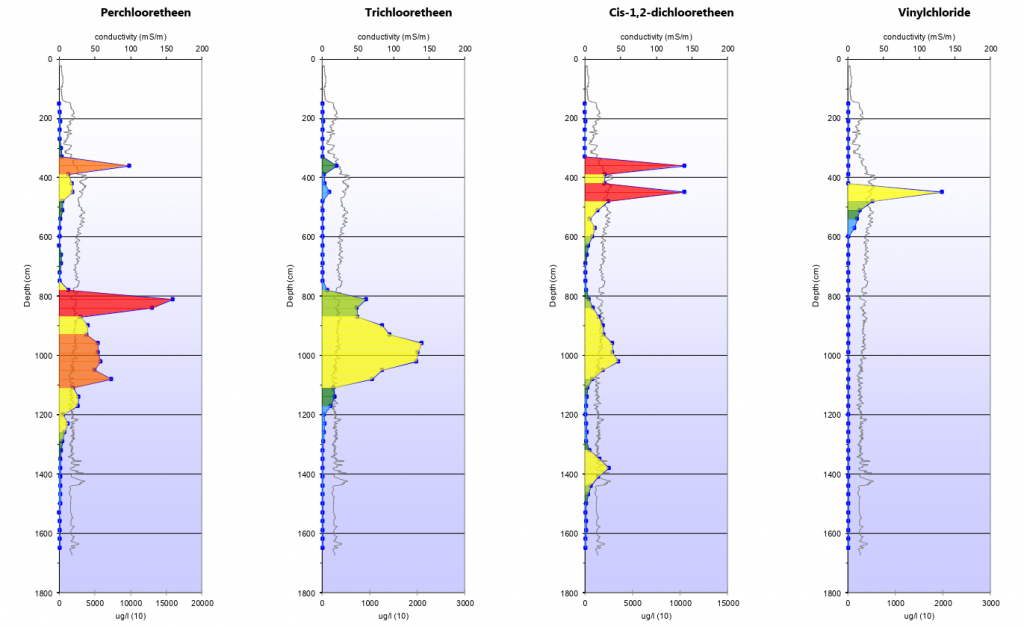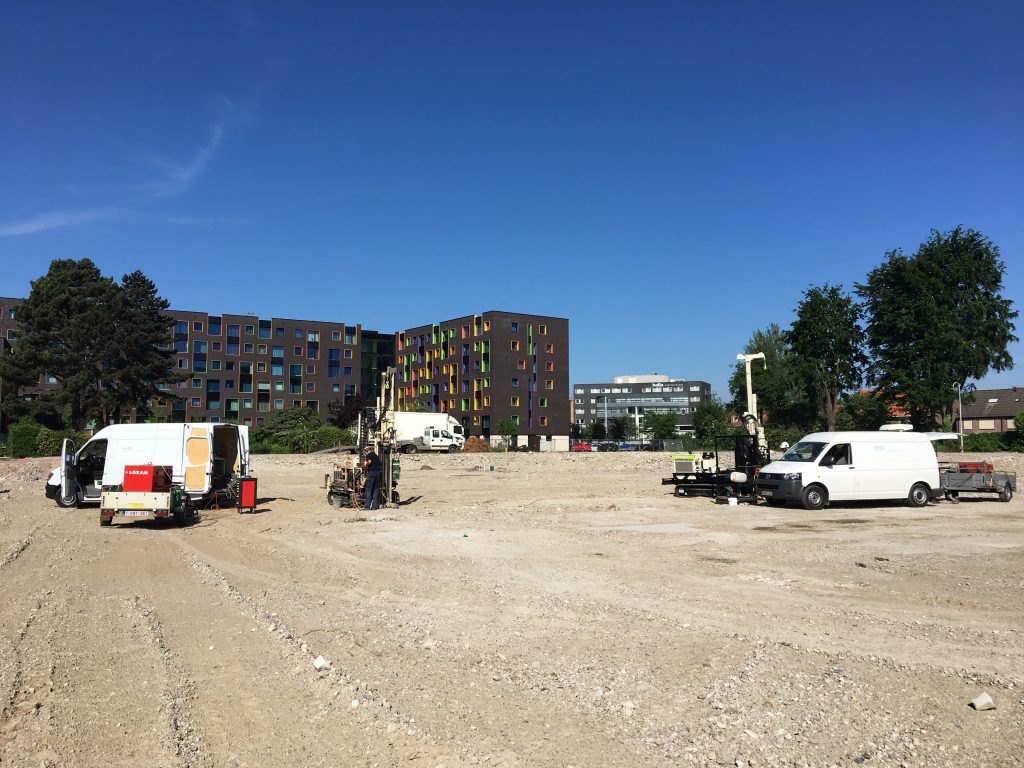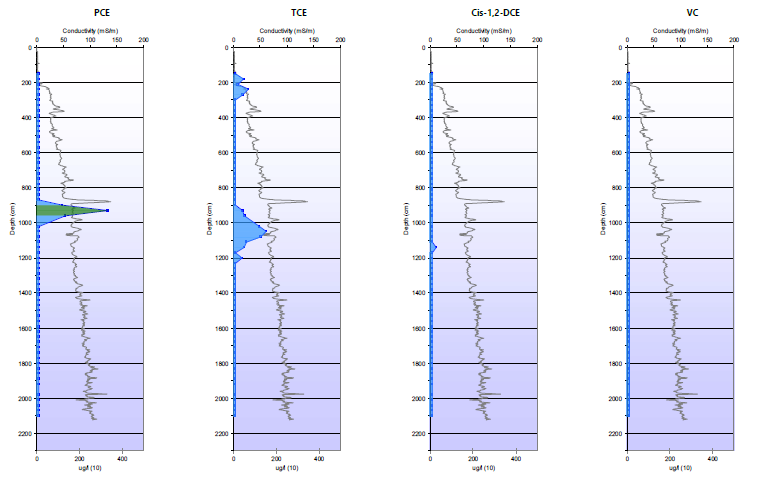MIP measurements with compact Geoprobe make indoor HRSC investigation possible at locations with limited space.
The EnISSA MIP method is unique in its application of an extremely sensitive and detailed detection system. With the help of an innovative sampling method we are able to directly couple the Membrane Interface Probe (MIP) to the GC-MS.
It is exactly by efficiently deploying this smart combination that we are able to carry out a GC-MS analysis every 30 cm and thus analyse individual VOCs. The large number of data points provide very clear insight into the presence and distribution of contamination.


Lorem ipsum dolor sit amet, consectetur adipiscing elit. Ut elit tellus, luctus nec ullamcorper mattis, pulvinar dapibus leo.
Lorem ipsum dolor sit amet, consectetur adipiscing elit. Ut elit tellus, luctus nec ullamcorper mattis, pulvinar dapibus leo.
This technology enables us to conduct measurements across the full sounding depth. This way we considerably reduce the probability of ‘missing’ the area of contamination.
Furthermore, we are able to develop specific profiles for each individual component. The advantage of this is that after calibration using standard solutions, we are able to compare the results with groundwater concentrations. This way the investigation can be continued to delineate the entire groundwater contamination plume.
In addition, by measuring the various individual components, a unique image of the degradation products of chlorinated solvents and the differential distribution of these products is obtained. However, the EnISSA MIP method can also detect and map out other parameters, such as: BTEX, MBTE, MEK, n-butyl acetate, hexane, acetone and the like. The result: useful information to help you design your remediation approach.
To collect specific geological and geohydrological information, the MIP probe is equipped with an integrated EC dipole. The purpose of this device is to be able to log the soil’s electric conductivity (mS/m). If you need even more detailed data, we can also combine the EnISSA MIP soundings with CPT or HPT measurements.
A non-exclusive list of components:
We create a visual representation of the detailed compound-specific MIP profiles for our customers. Sometimes even in 3D. This helps them in their customer advisory role to clearly illustrate the contamination situation.
We can therefore assert that this method produces extremely reliable information, which helps consultants to develop the CSM, which in turn ultimately results in a successful remediation project.

Lorem ipsum dolor sit amet, consectetur adipiscing elit. Ut elit tellus, luctus nec ullamcorper mattis, pulvinar dapibus leo.Lorem ipsum dolor sit amet, consectetur adipiscing elit. Ut elit tellus, luctus nec ullamcorper mattis, pulvinar dapibus leo.Lorem ipsum dolor sit amet, consectetur adipiscing elit. Ut elit tellus, luctus nec ullamcorper mattis, pulvinar dapibus leo.Lorem ipsum dolor sit amet, consectetur adipiscing elit. Ut elit tellus, luctus nec ullamcorper mattis, pulvinar dapibus leo.Lorem ipsum dolor sit amet, consectetur adipiscing elit. Ut elit tellus, luctus nec ullamcorper mattis, pulvinar dapibus leo.Lorem ipsum dolor sit amet, consectetur adipiscing elit. Ut elit tellus, luctus nec ullamcorper mattis, pulvinar dapibus leo.




Lorem ipsum dolor sit amet, consectetur adipiscing elit. Ut elit tellus, luctus nec ullamcorper mattis, pulvinar dapibus leo.Lorem ipsum dolor sit amet, consectetur adipiscing elit. Ut elit tellus, luctus nec ullamcorper mattis, pulvinar dapibus leo.Lorem ipsum dolor sit amet, consectetur adipiscing elit. Ut elit tellus, luctus nec ullamcorper mattis, pulvinar dapibus leo.Lorem ipsum dolor sit amet, consectetur adipiscing elit. Ut elit tellus, luctus nec ullamcorper mattis, pulvinar dapibus leo.Lorem ipsum dolor sit amet, consectetur adipiscing elit.
De gedetailleerde compound specifieke MIP-profielen maken we voor onze klanten heel visueel. Soms zelfs ook in 3D. Dit helpt hen in hun adviesrol naar klanten toe om de situatie van de verontreiniging helder te illustreren.
We kunnen dus stellen dat deze methodiek uiterst betrouwbare informatie oplevert, wat adviseurs helpt bij het opmaken van het CSM en wat op zijn beurt weer leidt tot een geslaagd saneringsproject in the end.